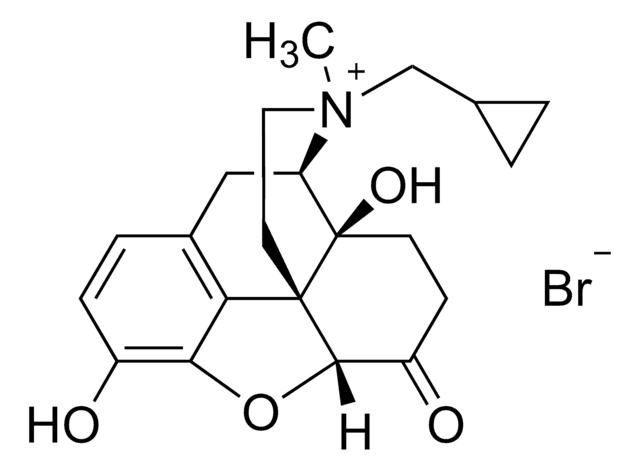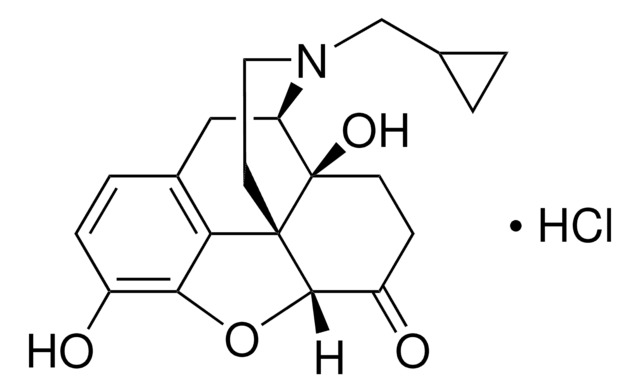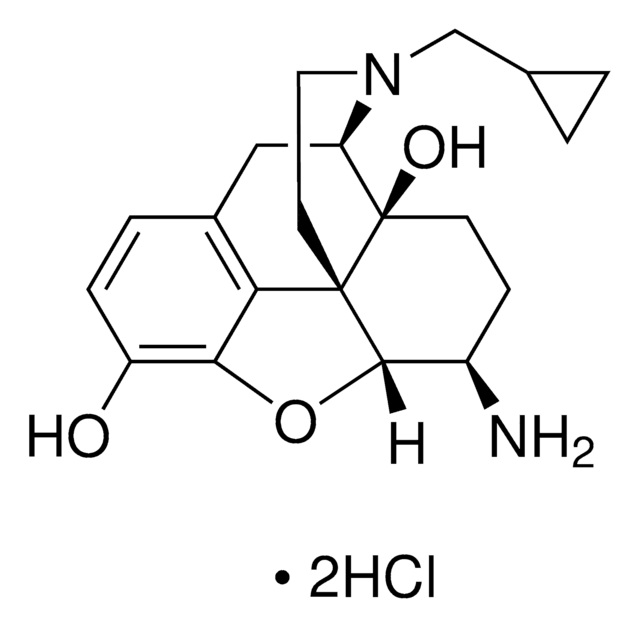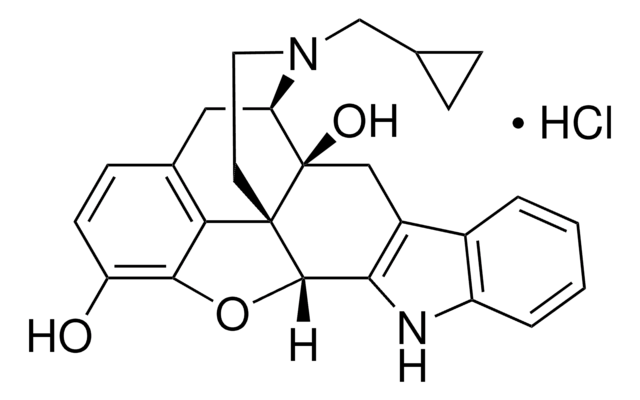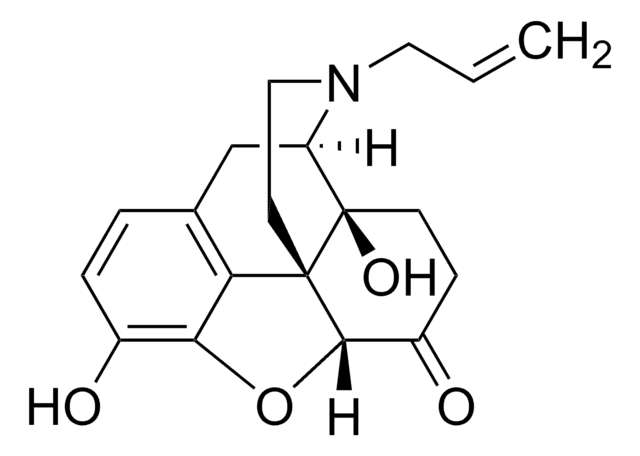SML0277
Methylnaltrexone bromide
≥97% (HPLC)
Synonym(s):
17-(Cyclopropylmethyl)-4,5α-epoxy-3,14-dihydroxy-17-methyl-6-oxomorphinanium bromide, MNTX, Methylnaltrexonium, Mrz-2663, N-Methylnaltrexone, Naltrexone MB, Quaternary ammonium naltrexone
About This Item
Recommended Products
Quality Level
Assay
≥97% (HPLC)
form
powder
storage condition
desiccated
color
white to beige
solubility
H2O: ≥5 mg/mL
shipped in
wet ice
storage temp.
−20°C
SMILES string
[Br-].C[N@+]1(CC[C@]23[C@H]4Oc5c(O)ccc(C[C@@H]1[C@]2(O)CCC4=O)c35)CC6CC6
InChI
1S/C21H25NO4.BrH/c1-22(11-12-2-3-12)9-8-20-17-13-4-5-14(23)18(17)26-19(20)15(24)6-7-21(20,25)16(22)10-13;/h4-5,12,16,19,25H,2-3,6-11H2,1H3;1H/t16-,19+,20+,21-,22?;/m1./s1
InChI key
IFGIYSGOEZJNBE-KNLJMPJLSA-N
Gene Information
human ... OPRM1(4988)
Looking for similar products? Visit Product Comparison Guide
General description
Application
Biochem/physiol Actions
Features and Benefits
Signal Word
Warning
Hazard Statements
Precautionary Statements
Hazard Classifications
STOT SE 2 Oral
Target Organs
Gastrointestinal tract
Storage Class Code
11 - Combustible Solids
WGK
WGK 3
Flash Point(F)
Not applicable
Flash Point(C)
Not applicable
Certificates of Analysis (COA)
Search for Certificates of Analysis (COA) by entering the products Lot/Batch Number. Lot and Batch Numbers can be found on a product’s label following the words ‘Lot’ or ‘Batch’.
Already Own This Product?
Find documentation for the products that you have recently purchased in the Document Library.
Articles
We offers many products related to opioid receptors for your research needs.
Our team of scientists has experience in all areas of research including Life Science, Material Science, Chemical Synthesis, Chromatography, Analytical and many others.
Contact Technical Service